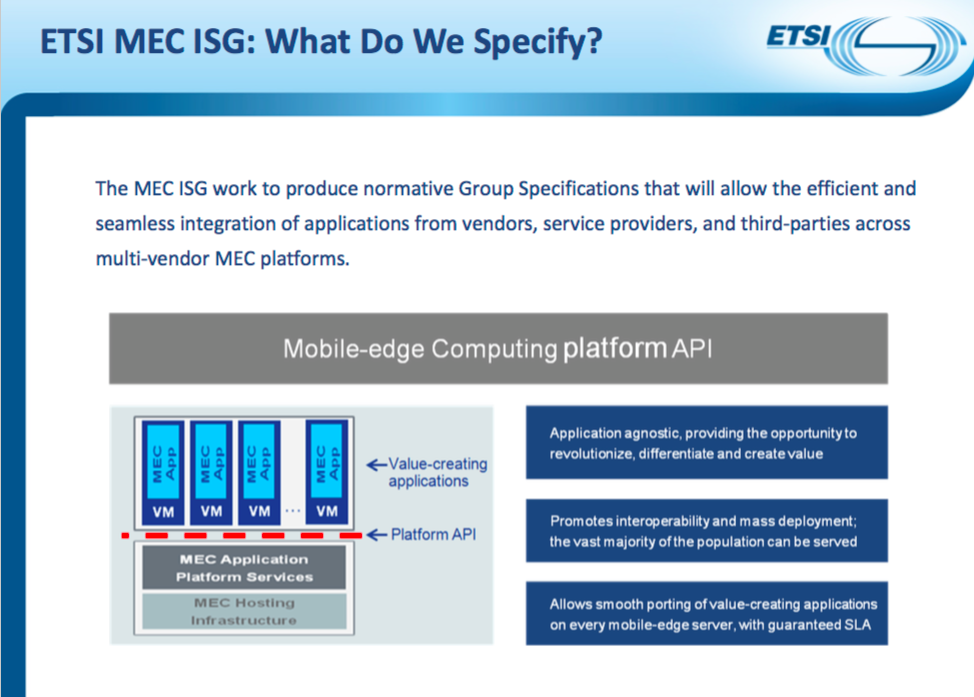Network slicing, mobile edge computing, machine learning, and LPWA are the high profile 5G related use cases that IETF is looking at to enable the next generation of mobile communication systems. A redesign and/or evolution of the internet protocol (IP) could be needed to meet the requirements of these use cases, and during its November 2016 meeting (IETF97) different threads of work and initiatives took place to kick off design and/or prepare specifications. The IETF is doing the 5G work under different groups. The most relevant outcomes and discussion are a new 5Gangip special group looking at the needs of fixed and mobile next generation 5G protocols; the nmlgr Group looking at applying machine learning for 5G at network level; the first network slicing draft; and ETSI’s MEC (Mobile Edge Computing) training introduction.
5Gangip Takes on 5G Mobile & Fixed Requirements: This is a special group in IETF has the task to analyze the overall implications of the upcoming 5G (fixed and) Mobile communication systems on IP protocols. The group is at an early stage of discussion. At IETF97, they put together the IP issues document presenting “open and upcoming issues with upcoming new communication systems denoted as 5G aiming to set a basis for documenting problem space, use-cases, and potential solutions related to next-generation network infrastructure. The draft reviews currently investigated topics, including both inputs from IETF and from other SDOs as well as research activities. The draft appears to focus on a simplified layering model for next generation IP, and it is in affinity with other efforts such as Identity-Location separation ILNP (Identifier-Locator Network Protocol published as RFCs 6740-6748); it also appears aligned with NSF (National Science Foundation) backed “mobility first” proposal of a global name resolution service (GNRS), and a Generalized Storage-Aware Routing (GSTAR) scheme to address core network level congestion.

Distributed Mobility Anchoring To Meet Diverse Mobility Needs of 5G and Beyond: IETF’s DMM Group made progress on Distributed Mobility Anchoring which covers how multiple anchors and nodes with mobility functions work together to provide IP mobility support. It says that a “network or network slice may be configured with distributed mobility anchoring depending on the needs of mobility support. In the distributed mobility anchoring environment, multiple anchors are available for mid-session switching of an IP prefix anchor. Without an ongoing session, i.e., no IP session continuity required, a flow of a mobile node can be re-started using a new IP prefix which is allocated from a new network of the mobile node and is therefore anchored to the new network. With an ongoing session, the anchoring of the prior IP prefix may be relocated to the new network to enable IP session continuity.
Network Machine Learning Proposed Research Group: The proposed Machine Learning (ML) group aims at defining this techniques in the network domain. Service clarification for 5G networks and Intelligent (ML) Defined Networks (IDN) which was presented by Huawei. So far the group has produced a draft document introducing background information of machine learning, then exploring “the potential of machine learning techniques for networks. This document is serving as a white paper of the (proposed) IRTF Network Machine Learning Research Group.”
IETF’s Networking Group Prepares Network Slicing Draft: The concept “Network Slicing” is widely discussed and considered as the key mechanism to meet the diverse service requirements concurrently with the same physical network infrastructure. This network slicing draft provides an overview of the concept “network slicing” in the current IMT-2020 (a.k.a. 5G) related works, and discusses the corresponding requirements on IP/MPLS network, which will be used as the mobile transport network for 5G.
Low Power IoT Networking Standards: LPWA The other group with activity related to 5G is the LPWA group whose work is just starting following the approved BoF at the previous IETF in Berlin. The group aims to develop wireless protocols to connect battery-powered devices over significant distances using license exempt bands thus not oriented to cellular system. Overall the work of this group is necessary to enable a variety of IoT applications, For now their scope is to in their scope the group to produce a standards for fragmentation of a CoAP/UDP/IPv6 packet over LPWA networks, and some of this work could in the future be applicable to 5G IoT.

Training Session on Mobile Edge Computing (MEC): ETSI delivered a training presentation during IETF97 diving into howMEC helps satisfying the demanding requirements for the 5G era in terms of expected throughput, latency, scalability and automation; it also offers additional privacy and security and ensures significant cost savings. Many of the use cases can be deployed with Mobile Edge Computing prior to 5G thus MEC is not specific but many of its features are enablers of 5G via the MEC and Platform APIs.
Source: IETF
Find us also in Facebook, Google+, Instagram, Medium, Twitter
Partnerships, Inquiries: socialmedia(at)5g-magazine.com
© 2016 WWW.5G-MAGAZINE.COM – All rights reserved. Use of this Web site signifies your agreement to its Terms & Conditions.

